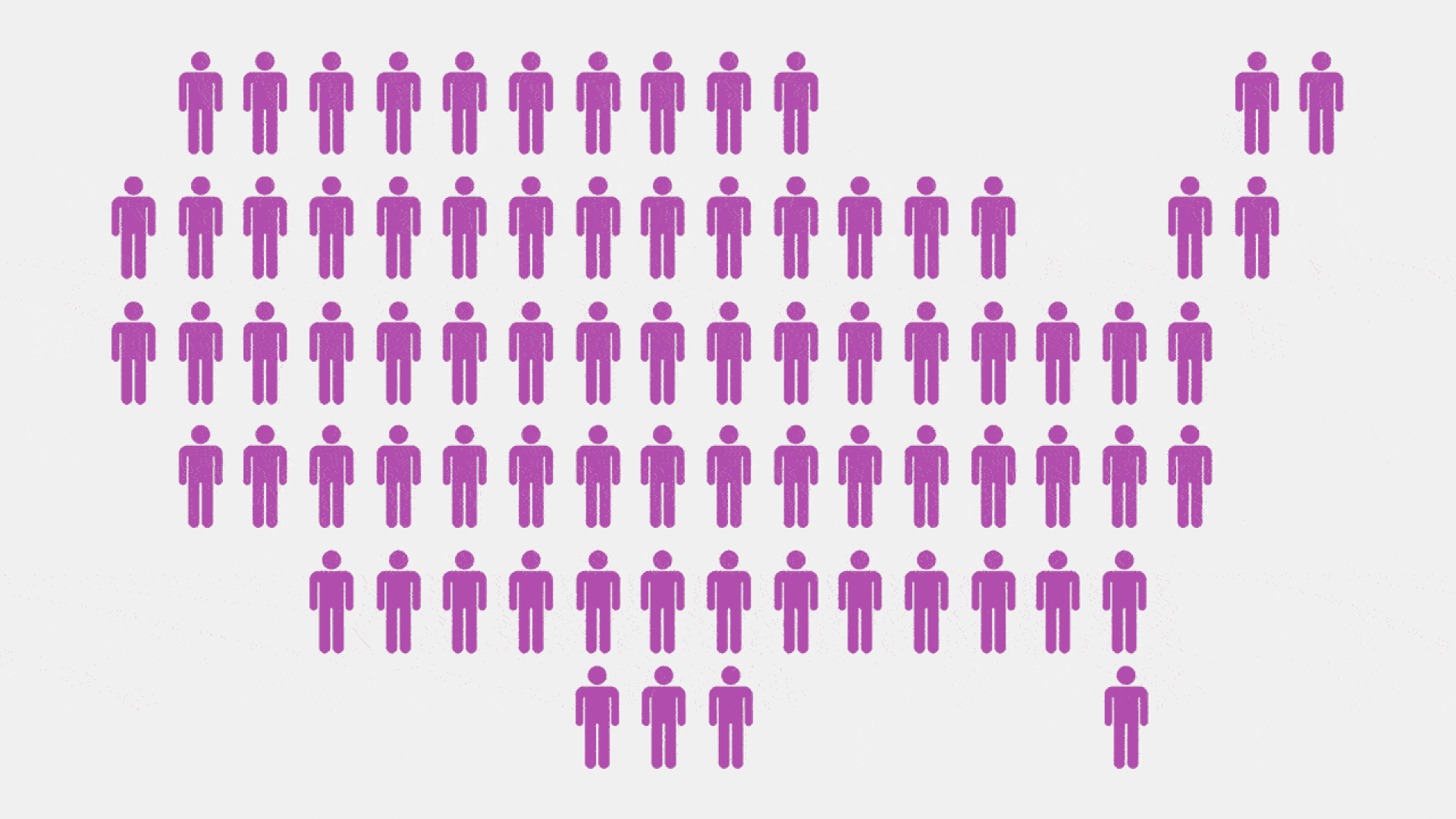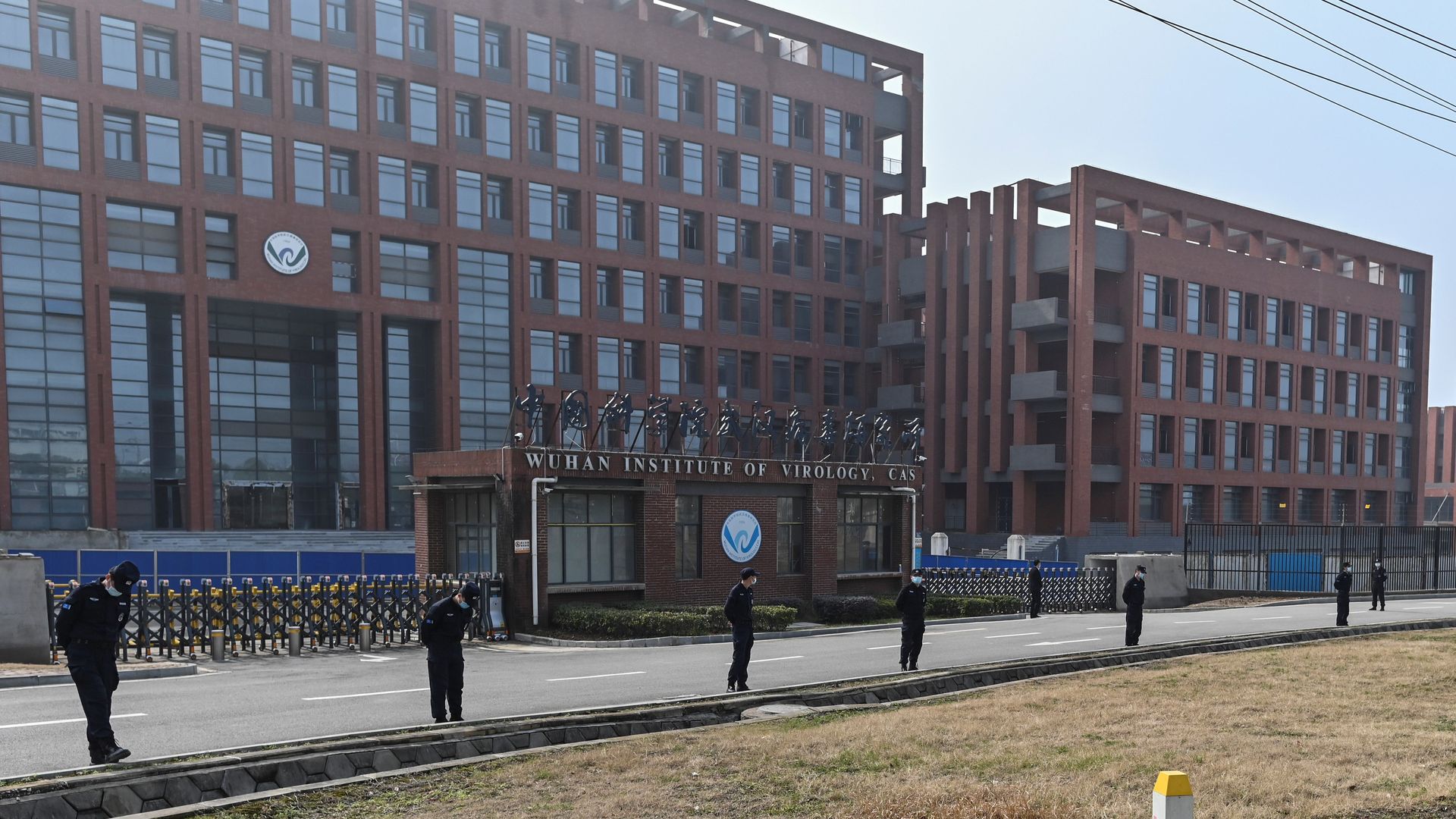| | | | | | | Presented By General Motors | | | | Axios Future | | By Bryan Walsh ·May 15, 2021 | | Welcome to Axios Future, where after this week's CDC announcement, I'm really hoping those nightmares about accidentally leaving my mask at home will finally end. Today's Smart Brevity count: 1,824 words or about 7 minutes | | | | | | 1 big thing: America's slowing population growth puts limits on its future |  | | | Illustration: Annelise Capossela/Axios | | | | The U.S.' sharply declining rate of population growth threatens to put an expiration date on a country built around a vision of endless reinvention. The big picture: Fewer people means fewer workers to support an aging population, fewer innovators with new ideas, less economic growth — and more of one thing: political fights over a shrinking pie. By the numbers: At the end of April, the Census Bureau reported that between 2010 and 2020, the U.S. population grew at its slowest rate since the Great Depression and the second-slowest rate in any decade since the country's founding. - The fertility rate — defined as the number of live births per 1,000 women aged 15–44 — fell from 64.1 in 2010 to 55.8 in 2020.
- That's in part a result of positive changes, like the sharp drop in teen pregnancies, but it also means Americans are not having enough babies to keep the country's population growing by births alone.
The impact: Countries with falling population growth — and eventually population decline — face serious economic, political and even cultural challenges. - Fewer births combined with longer lifespans mean fewer productive young workers to balance those in retirement. As a result, JPMorgan senior economist Jesse Edgerton notes, there will be excess capital sloshing around the global economy, keeping interest rates low and making it more difficult to save for retirement.
- While a slower-growing population puts less pressure on the climate, new ideas come from people, and fewer people means fewer sources for those new ideas. That leads to a slowdown in innovation at the very moment when we need it most, as Stanford economist Charles Jones argued in a recent paper.
Put those two trends together, and you have a formula for corrosive generational conflict and a country in long-term decline — which is exactly what a 2019 Pew survey about Americans' attitudes toward the future found. Context: Slowing population growth is a reality throughout most of the developed world, as well as in China, where government data released this week showed the average annual population growth over the past 10 years was just 0.53%, the slowest in decades. Yes, but: The U.S. has one option to keep its population growing that China and many other countries lack: immigration. - The average age of immigrants is more than seven years younger than the median American, which means they're in a demographic position to bolster the workforce for decades and have more children of their own.
The catch: While the U.S. had a net migration of more than 1 million people a year leading up to 2016, that number fell to an estimated 595,000 in 2019, even before pandemic-led border controls closed the spigot further. - A report this year from the National Immigration Forum found increasing net immigration levels by at least 37% — approximately an additional 370,000 immigrants per year — would prevent the U.S. from falling into a "demographic deficit."
What to watch: The progress of President Biden's immigration proposals, which would expand legal immigration while creating a pathway to citizenship for millions of undocumented immigrants. - The Biden administration has also proposed a number of family-friendly policies in its American Families Plan, including enhanced child tax credits and free preschool for children ages 3–4, but globally, pro-natality policies have done little to bend the fertility curve upward.
The bottom line: No country in the world has figured out a reliable way to induce citizens to have more children over the long term, which means the U.S. can live up to its self-conception as a "nation of immigrants" — or face a shrinking future. |     | | | | | | 2. The COVID lab-leak theory goes mainstream |  | | | The Wuhan Institute of Virology. Photo: Hector Retamal/AFP via Getty Images | | | | A group of high-profile scientists published a letter calling for renewed investigation into the origins of COVID-19 — including the theory that it spilled out of a virology lab. Why it matters: The possibility that SARS-CoV-2 was created in a Chinese lab and accidentally escaped — rather than emerging naturally from an animal — was initially dismissed as a conspiracy theory. But the letter shows a potential lab leak is increasingly being taken seriously. Driving the news: In the letter published Thursday in the journal Science, a group of prominent epidemiologists and biologists wrote "theories of accidental release from a lab and zoonotic spillover both remain viable." Flashback: A World Health Organization-led investigation in China earlier this year concluded a zoonotic spillover from an animal was "likely to very likely," while a lab leak of a human-made virus was dismissed as "extremely unlikely." - The letter in Science, though, notes "the two theories were not given balanced consideration," with only four out of the report's 313 pages addressing the possibility of a laboratory accident.
Between the lines: In a contentious exchange with Sen. Rand Paul this week, Anthony Fauci said he was "fully in favor of any further investigation of what went on in China," while denying the National Institutes of Health had funded any "gain of function" research in China's Wuhan Institute of Virology. - Former New York Times science journalist Nicholas Wade raised more questions recently with a long article noting, among other things, the paucity of any clear evidence of a zoological spillover more than 16 months after the pandemic began.
The bottom line: Given the Chinese government's opacity on the issue, we may never know the true origins of a virus that has killed millions of people. |     | | | | | | 3. Blood (biomarkers) will tell |  | | | Illustration: Shoshana Gordon/Axios | | | | Diagnostics that can identify biomarkers of disease in the blood are helping speed drug trials for intractable conditions like Alzheimer's. Why it matters: Blood biomarker diagnostics can help pharmaceutical companies identify the right patients to enroll in drug trials for difficult-to-diagnose neurological conditions without resorting to more expensive and invasive methods like brain scans or spinal taps. Driving the news: The FDA is due to make a decision by June 7 on Biogen's aducanumab drug, which if approved would be the first drug ever authorized to slow the course of a form of dementia found in some 6 million Americans. - The decision will be fraught — an advisory panel to the FDA declined to endorse the drug in November, saying there was not enough evidence of its effectiveness.
Between the lines: Potential Alzheimer's drugs have continually disappointed in trials, in part because identifying potential trial participants in the earliest stages of the disease has been so difficult. - "Historically by the time you present with dementia, it's very difficult for a drug to reverse it," says Kevin Hrusovsky, CEO of the diagnostics company Quanterix. "By recruiting patients long before dementia, you increase the probability that the trial is going to be successful."
How it works: Quanterix's testing platform has been able to identify very small levels in the blood of a protein linked to Alzheimer's disease called neurofilament light chain (NfL), a biomarker of neuronal death. - NfL is found in greater concentrations in cerebrospinal fluid, but detecting it there requires painful and expensive spinal taps.
- "We can identify elevations in NfL 16 years before dementia symptoms set in," says Hrusovsky. That predictive ability, plus the relatively low cost and ease of a blood test, makes it ideal for screening patients.
What's next: While blood biomarker tests like Quanterix's will most immediately be useful for trial screening, Hrusovsky envisions a future where such diagnostics could be used to identify early signs of brain disease or injury in the general public. |     | | | | | | A message from General Motors | | General Motors' mission is zero-emissions | | |  | | | | By 2040, it is our goal to be carbon neutral and source 100% renewable energy to power our U.S. sites What GM is doing: Which is why we are investing in sustainable processes, flexible platforms and EVs that are accessible to all. Learn more about the initiative. | | | | | | 4. Misinformation and vaccine trust |  | | | Illustration: Sarah Grillo/Axios | | | | COVID-19 is the first major pandemic in the social media era — offering experts a rare opening to study the relationship between online misinformation and human behavior on a large scale, my Axios colleagues Alison Snyder and Sara Fischer report. Why it matters: As misinformation about COVID-19 vaccines runs rampant, researchers are trying to measure how much memes and messages with false information can alter someone's decision to get vaccinated. What's happening: "There is mounting evidence that exposure to certain types of media is associated with hesitancy," says Kayla de la Haye, who studies social networks and their impact on health and disease prevention at the University of Southern California. - Tech platforms are scrambling to deal with vaccine disinformation, but experts argue they may be too late and misinformation is persisting.
Details: In a recent Axios-Ipsos poll, "Americans who either believed misinformation or were unsure whether it was true or false were less likely to get the vaccine than those who knew that it was false," Axios' David Nather reported. - Researchers at Indiana University's Observatory on Social Media found states where a higher percentage of discussions on Twitter included low-credibility sources also tended to have a higher percentage of people who are hesitant to take a vaccine.
Yes, but: It's really hard to connect exposure to misinformation to behaviors, says de la Haye. That's because of "the difficulty of monitoring what an individual gets exposed to online and what they subsequently go and do." Go deeper. |     | | | | | | 5. Worthy of your time | | The darkness (Noah Smith) - There is a dark undercurrent of anti-democratic, authoritarian politics rising around the world — and here in the U.S.
The case for letting people work from home forever (Jaclyn Greenberg — Wired) Is Mars ours? (Adam Mann — The New Yorker) - An excellent meditation on the colonial roots of space settlement that raises one possible answer: not if Elon Musk gets there first.
Rumble in the jungle: which animals would win in a fight? (YouGov) - Are you one of the 6% of Americans who believe they'd win an unarmed fight with a grizzly bear? If so, Werner Herzog would like to have a word with you.
|     | | | | | | 6. 1 sci-fi thing: The military wants to conquer jetlag |  | | | Enjoy those naps while you can, soldier. Photo: Bill Clark/CQ-Roll Call, Inc via Getty Images | | | | The Defense Advanced Research Projects Agency (DARPA) is funding scientific projects to control service members' sleep/wake cycles in the service of fighting jetlag. Why it matters: Jetlag is an annoyance for the average traveler (or was back when people, you know, went places), but for a U.S. military that operates across the globe, it can be a critical challenge to operational readiness. What's happening: DARPA — the research agency that brought you such hits as "the internet" and "cyborg beetle spies" — this week announced the launch of the ADvanced Acclimation and Protection Tool for Environmental Readiness research program. - That's ADAPTER for short, because it's not the military unless you can acronymize it.
How it works: The primary focus of ADAPTER is to develop implants and devices that can regulate, on demand, bodily rhythms disrupted by jetlag or shift-work schedules. - Researchers at Northwestern University will try to engineer a wirelessly controlled bioelectronic implant — nicknamed the "living pharmacy" — that releases peptide-based therapies to, in the words of the DARPA release, "harmonize the warfighter's central and peripheral circadian clock."
- Stanford University researchers will work on an implantable device that can release melatonin — a naturally produced chemical that induces sleepiness — on demand for up to 30 days.
By the numbers: A recent study found that sleep disorders are a serious problem in the military, with insomnia diagnoses rising 45-fold between 2005 and 2019. - An update to the Army's Holistic Health and Fitness manual last year emphasized the importance of sleep and advised soldiers to "take the longest nap possible as frequently as time is available."
My thought bubble: I asked my younger brother Sean, an Army veteran, about his most memorable sleep experience in the military. The bottom line: I'm ready to take a nap just thinking about that. |     | | | | | | A message from General Motors | | General Motors sets new goal to be carbon neutral by 2040 | | |  | | | | Driven by our transition to EVs, we have set a goal for carbon neutrality in the next 20 years—not just in our operations, but in our products, too. It's our pledge to help get us closer to our vision of an all-electric future. Learn more about General Motors' efforts. | | | | | | Axios thanks our partners for supporting our newsletters.
Sponsorship has no influence on editorial content. Axios, 3100 Clarendon Blvd, Suite 1300, Arlington VA 22201 | | | You received this email because you signed up for newsletters from Axios.
Change your preferences or unsubscribe here. | | | Was this email forwarded to you?
Sign up now to get Axios in your inbox. | | | | Follow Axios on social media:    | | | | | |
No comments:
Post a Comment